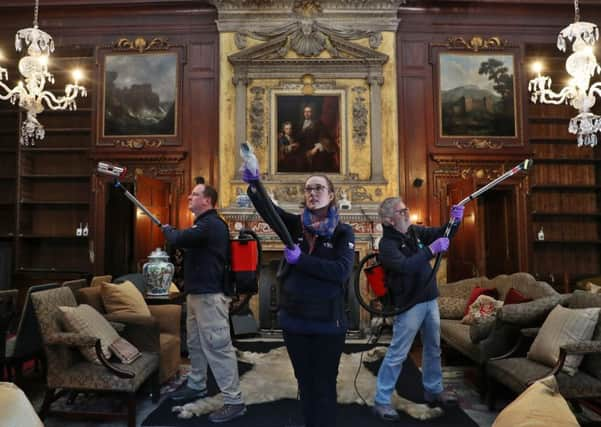If there’s something wild in your country pile – who you gonna call? Mothbusters!


But this week an A-listed Palladian mansion is to be turned ice-cold – literally – in an effort to rid it of an insect plague threatening to destroy its historic collections.
Newhailes House, in Musselburgh, East Lothian, has employed a team of “moth- busters” to tackle the problem creatures which are slowly eating away at the property’s textiles.
Advertisement
Hide AdAdvertisement
Hide AdThe National Trust for Scotland (NTS) has installed two 20ft-long industrial freezers, each the size of a shipping crate, inside the 17th-century country house to eradicate the insects as part of its largest ever pest management programme.
Carpets, clothing, curtains and items of furniture will be wrapped in acid-free tissue paper before being cooled to -35C to destroy moth eggs and larvae.
Pest controllers will then use specialist back-mounted vacuum cleaners to clear up any debris left behind by the treatment in the hope it will preserve the historic materials.
Newhailes House was once home to the influential Dalrymple family, who gave the house its library, rococo interiors and collections of paintings, ceramics and furniture.
Built in 1686 by pioneering architect James Smith, the house was vacated in 1980 after passing through six generations of the Dalrymple family.
It was bought by the NTS in 1997 and is used for weddings, corporate events and guided tours.
Staff at the property noticed a sharp rise in the webbing clothes moth or common clothes moth in 2016 and have been managing the problem with localised treatment and targeted deep cleaning.
However, moth numbers and damage have continued and the NTS is implementing the freeze programme to protect the collection.
Advertisement
Hide AdAdvertisement
Hide AdA team of volunteers has been recruited to work with the trust’s collection and conservation staff to undertake the low temperature treatment, deep cleaning of the historic interior and collection movements.
Mel Houston, national preventive conservator at the NTS, said: “This is the biggest project that the National Trust for Scotland has ever undertaken to tackle a pest problem like this and protect the important collections here at Newhailes.
“In the last year moth numbers at Newhailes have exploded and we’ve seen a fourfold increase in how many we’re finding.
“We’re lucky to have been able to catch the problem at just the right time, when we’re able to do something to control the moths before really serious damage is done.”
The charity has used freezers to destroy moths at other properties but on a small scale using chest-sized freezers.
Ms Houston added: “The deep freeze and deep clean gives us the confidence that we’re killing off as many moths as we can.
“We’ll never get rid of them completely but we’ll be able to get down to the level where they can be controlled.”
Over the course of the project, the trust will run tours so that members of the public can learn about the damage that the insects have caused and see the moth management programme in action.